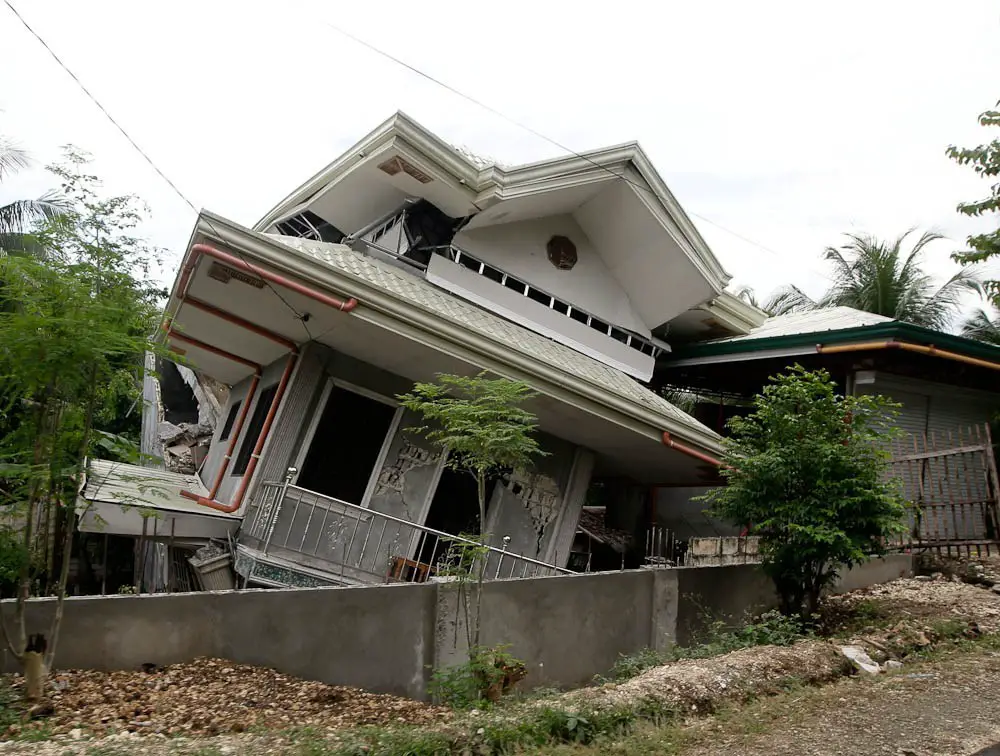As the Philippines experiences several instances of earthquakes, it makes a lot of sense to do a self-check on the safety of residential and commercial buildings.
The following test is aimed at understanding and evaluating the integrity of your house and how vulnerable is it under strong earthquakes. The initial result will verify if your house was built properly and has followed appropriate construction guidelines or if will it require necessary strengthening.
The test is intended for one- or two-story Concrete Hollow Block (CHB) buildings, including residential units, small shops, offices, garages, or similar structures. Conducting this test will help owners understand the likely behavior of such structures during a strong earthquake.

This method of evaluating CHB houses was developed as an easy and manageable test for laymen to promote inexpensive yet practical performance evaluation of residential houses against earthquakes and to subsequently disseminate information and strategies for strengthening.
Table of Contents
Who built or designed my house?
- Built/designed by a licensed civil engineer/architect – 1 point
- Not built by a licensed civil engineer/architect – 0
- It is not clear or unknown – 0
How old is my house?
- Built-in or after 1992 – 1 point
- Built before 1992 – 0
- It is not clear or unknown – 0
Has my house been damaged by past earthquakes or other disasters?
- No or Yes but repaired – 1 point
- Yes, not yet repaired – 0
- It is not clear or unknown – 0
What is the shape of my house?
- Regular (symmetrical, rectangular, box-type, simple) – 1 point
- Irregular/complicated – 0
- It is not clear or unknown – 0
Has my house been extended or expanded?
- No or Yes but supervised by a civil engineer/architect – 1 point
- Yes, but not supervised by a civil engineer/architect – 0
- It is not clear or unknown – 0
Are the external walls of my house 6-inch (150 mm) thick CHB?
- Yes, it is 6-inch – 1 point
- No, it is thinner than 6-inch – 0
- It is not clear or unknown – 0
Are steel bars of standard size and spacing used in walls?
- Yes (10mm diameter, tied and spaced correctly) – 1 point
- No, fewer and smaller than 10mm – 0
- None or unknown – 0
Are there unsupported walls more than 3 meters wide?
- None, all unsupported walls are less than 3m wide – 1 point
- Yes, at least one unsupported wall is more than 3m wide – 0
- It is not clear or unknown – 0
What is the gable wall of my house made of?
- Light materials, properly anchored CHBs, no gable wall – 1 point
- Not properly anchored CHBs, bricks, stone – 0
- It is not clear or unknown – 0
What is the foundation of my house?
- Reinforced concrete – 1 point
- Stones or unreinforced concrete – 0
- It is not clear or unknown – 0
What is the soil condition under my house?
- Hard (rock or stiff soil) – 1 point
- Soft (muddy or reclaimed) – 0
- It is not clear or unknown – 0
What is the overall condition of my house?
- Good condition – 1 point
- Poor condition – 0
- It is not clear or unknown – 0
Sum up the points from the above questions.
Score
- 11-12: Though your house seems safe for now, consult experts for confirmation
- 8-10: Your house requires strengthening, please consult experts.
- 0-7: This is disturbing! Please consult experts soon.
The material was prepared by the Philippine Institute of Volcanology and Seismology of the Department of Science and Technology, in collaboration with the Association of Structural Engineers of the Philippines under the Japan International Cooperation Agency – Japan Science and Technology Project on the Enhancement of Earthquake and Volcano Monitoring and Effective Utilzation of Disaster Mitigation Information in the Philippines.
